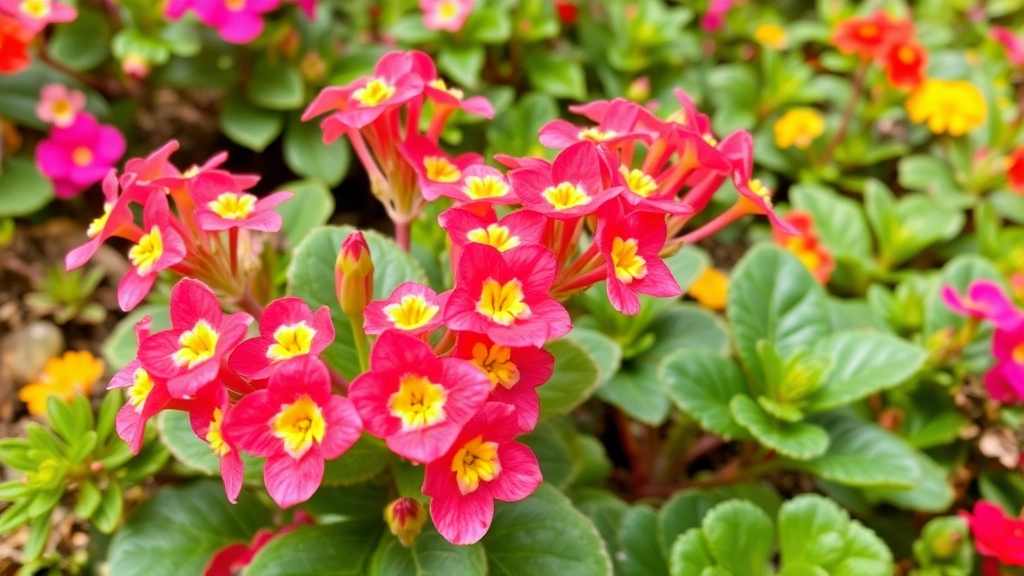Kalanchoe Flowering Season
Have you ever wondered when the best time is to see your kalanchoe plants in full bloom? The kalanchoe flowering season is a magical period that every plant enthusiast looks forward to. These vibrant, long-lasting flowers can brighten up any space, making them a favourite for both indoor and outdoor gardens. In this article, I’ll guide you through the essential details you need to know about the kalanchoe flowering season.
Understanding the Kalanchoe Flowering Season
Understanding the kalanchoe flowering season is key to ensuring your plants thrive. Typically, kalanchoes bloom in late winter to early spring, but with the right care, you can extend their flowering period. Keep reading to discover tips and tricks for maximising your kalanchoe’s blooming potential and enjoy a splash of colour all year round.
Optimal Blooming Time for Kalanchoe
When should you expect your Kalanchoe to burst into bloom? This is a common question among plant enthusiasts.
Kalanchoe, renowned for its vibrant flowers and ease of care, typically blooms in the late winter to early spring months. This period aligns with its natural growth cycle, making it the ideal time to witness its stunning floral display.
Key Blooming Periods:
- Late Winter: January to February
- Early Spring: March to April
During these months, you can expect a profusion of flowers, bringing a splash of colour to your space.
The blooming time can vary slightly based on the specific variety of Kalanchoe you have. Some may start flowering as early as December, while others might hold off until May.
Understanding this optimal blooming time is crucial for planning your care routine. For instance, if you have a Flaming Katy Kalanchoe, you might notice it flowering earlier than other varieties. Additionally, if your Florist Kalanchoe is not flowering, there might be specific causes and fixes to consider.
Factors Influencing Kalanchoe Flowering
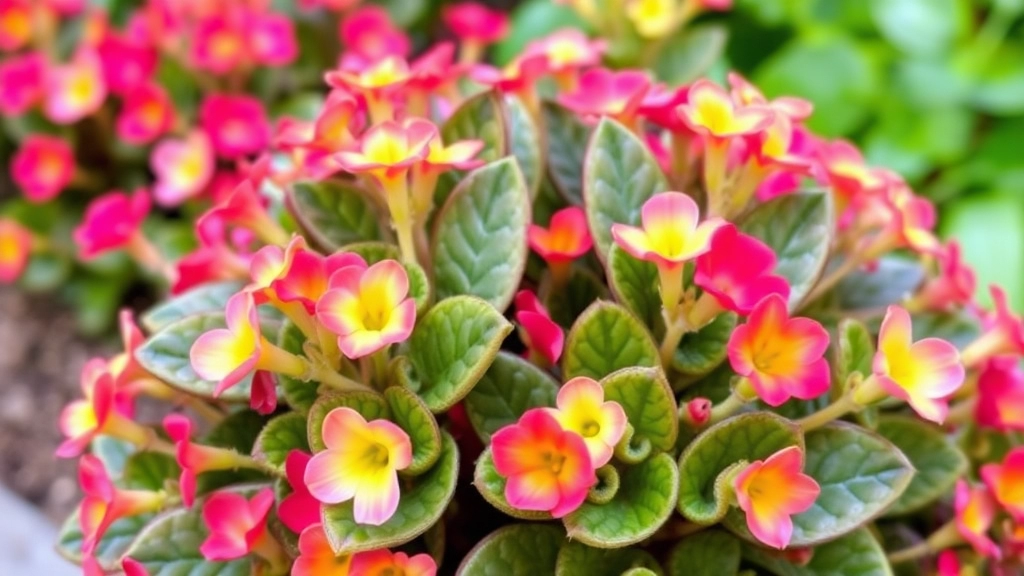
So, you’re eager to see your Kalanchoe burst into bloom, right?
Well, several factors can impact when and how beautifully it flowers. Let’s dive into these key influences that can help you coax those vibrant blooms.
1. Light Exposure
Kalanchoe loves bright light.
- Direct sunlight for a few hours daily is ideal.
- Too little light? You might end up with fewer flowers.
2. Temperature
The right temperature can make all the difference.
- Kalanchoe enjoys warm conditions—ideally between 18°C to 24°C.
- If it’s too cold, it may stop blooming altogether.
3. Watering Habits
Overwatering can be a real buzzkill for flowering.
- Ensure the soil dries out between waterings.
- A good rule of thumb? Water when the top inch feels dry.
4. Humidity Levels
Kalanchoe thrives in moderate humidity.
- If your home is too dry, consider misting occasionally.
- Avoid overly humid spaces, as they can lead to rot.
5. Pruning Practices
Regular pruning can stimulate new growth.
- Snip off spent flowers to encourage more blooms.
- Trim back leggy growth to promote bushier plants.
6. Fertilization Schedule
Feeding your Kalanchoe is crucial for flowering.
- Use a balanced fertiliser during the growing season.
- A monthly feed can work wonders for bloom production.
7. Rest Period
Believe it or not, Kalanchoe needs a break.
- After blooming, give it a rest with less water and no fertiliser.
- This downtime helps rejuvenate the plant for its next flowering cycle.
Seasonal Care Tips for Kalanchoe
As we delve into the seasonal care tips for Kalanchoe, it’s essential to understand how each season impacts its growth and flowering potential.
Light Requirements for Flowering
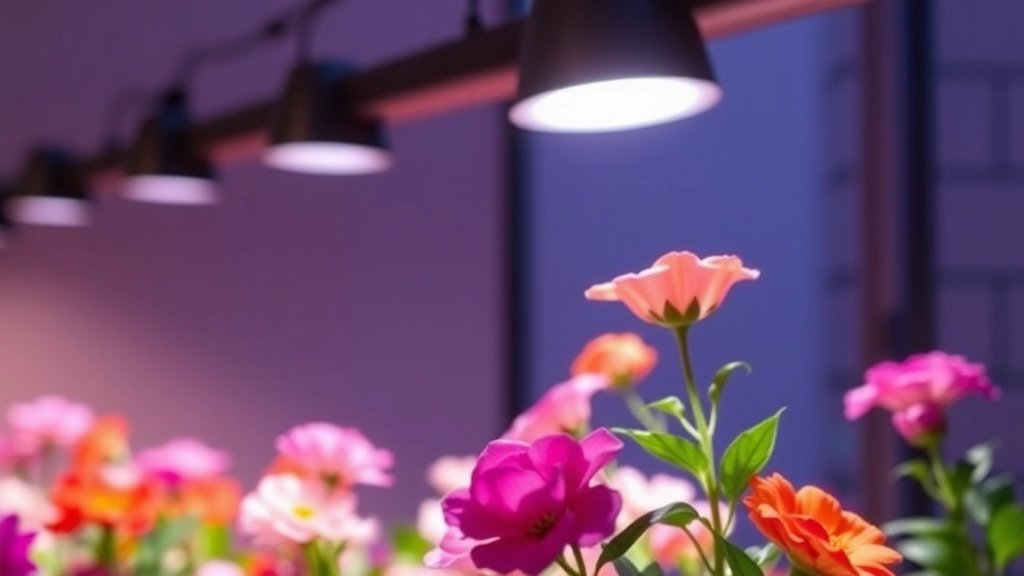
When it comes to achieving stunning blooms in your Kalanchoe, understanding its light requirements is essential. Many plant enthusiasts often wonder, “How much light does my Kalanchoe really need to thrive?”
Optimal Light Conditions
Kalanchoe thrives best in bright, indirect sunlight. Here are some key points to consider:
- Direct Sunlight: While Kalanchoe can handle some direct sunlight, too much can scorch the leaves. Aim for about 4-6 hours of indirect light daily.
- South or West-Facing Windows: These locations are ideal as they provide ample light without the harshness of direct sun exposure.
- Artificial Light: If natural light is limited, consider using grow lights. Position them about 12-18 inches above the plant for optimal results.
Signs of Insufficient Light
If your Kalanchoe isn’t receiving enough light, you might notice:
- Leggy Growth: Stretched stems and sparse leaves indicate the plant is reaching for light.
- Reduced Flowering: A lack of blooms can signal that your plant isn’t getting the light it needs.
Adjusting Light Exposure
To ensure your Kalanchoe gets the right amount of light, consider the following:
- Rotate the Plant: Regularly rotate your Kalanchoe to promote even growth and prevent leaning.
- Seasonal Adjustments: During winter, you may need to move your plant closer to the light source as days get shorter.
Watering Schedule for Maximum Blooms
When it comes to ensuring your Kalanchoe produces maximum blooms, the watering schedule is crucial. Many plant enthusiasts often worry about overwatering or underwatering, which can lead to disappointing flowering.
Understanding Kalanchoe’s Water Needs:
- Frequency: Water every 2-3 weeks during the growing season (spring and summer). In the dormant months (autumn and winter), reduce watering to once a month.
- Soil Check: Always check the top inch of the soil. If it’s dry, it’s time to water. If it’s still moist, hold off.
- Watering Method: Water deeply until you see it draining out of the bottom of the pot. This encourages strong root growth.
- Humidity Consideration: Kalanchoe prefers a dry environment. Avoid misting or placing it in overly humid areas.
Signs of Overwatering and Underwatering:
- Overwatering: Yellowing leaves, mushy stems, or root rot.
- Underwatering: Wrinkled leaves or droopy stems.
By following this watering schedule, you can help your Kalanchoe thrive and bloom beautifully. For more detailed care tips, check out our Ultimate Guide to Variegated Kalanchoe Care Tips and learn how to Fix Overgrown Leggy Kalanchoe for a healthier plant.
Pruning Techniques to Encourage Flowering
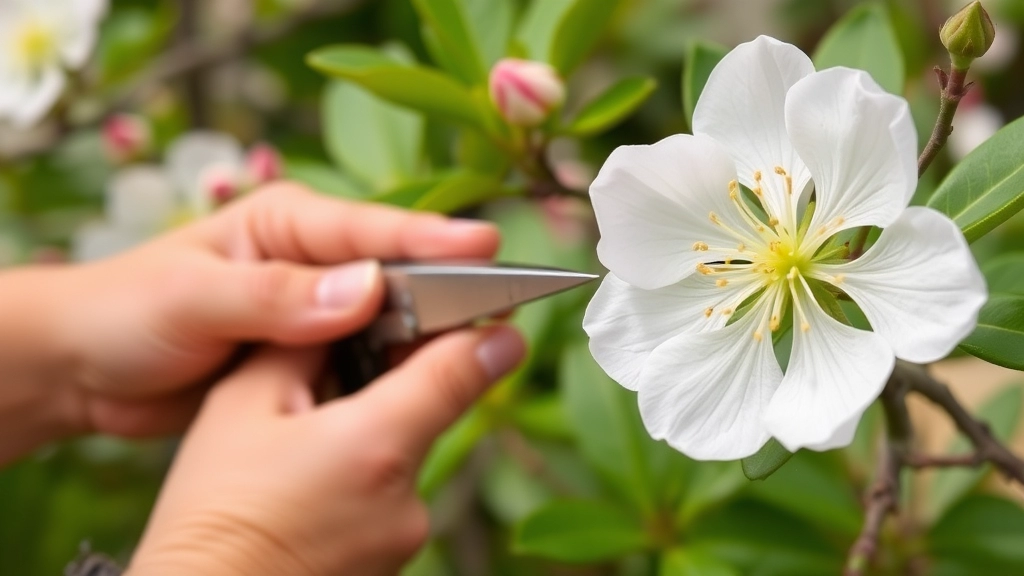
So, you’re wondering how to get your Kalanchoe to bloom like a champ?
Pruning is a game-changer when it comes to encouraging those vibrant flowers.
- Timing Matters: The best time to prune your Kalanchoe is right after it finishes blooming. This gives the plant a chance to recover and focus on new growth.
- Cut Back Wisely: Snip off any spent flowers and dead leaves. This not only tidies up your plant but also directs energy toward new blooms.
- Shape It Up: If your Kalanchoe is getting a bit leggy, don’t be shy! Trim back the stems to encourage bushier growth. Aim for about a third of the stem length.
- Use Clean Tools: Always use sharp, clean scissors or pruning shears. This helps prevent any disease from spreading.
- Don’t Overdo It: Less is more! Over-pruning can stress your plant and hinder blooming.
- Encourage Lateral Growth: If you notice a stem growing taller than others, trim it back. This helps promote more flowers along the sides.
By keeping these pruning techniques in mind, you’ll be well on your way to a fuller, flower-filled Kalanchoe.
Fertilization for Healthy Blooms
As we delve deeper into ensuring your Kalanchoe thrives, fertilization plays a pivotal role in promoting vibrant, healthy blooms. Many plant enthusiasts often wonder, “What type of fertiliser should I use for my Kalanchoe?” or “How often should I fertilise my plant?” These questions are crucial for achieving that stunning display of flowers.
Choosing the Right Fertiliser
When it comes to fertilising Kalanchoe, the key is to select a balanced, water-soluble fertiliser. Look for one that has an N-P-K ratio of 15-30-15 or something similar. This indicates the right balance of nitrogen, phosphorus, and potassium, which are essential for flowering.
Fertilisation Schedule
- Frequency: Fertilise your Kalanchoe every 4-6 weeks during the growing season (spring and summer).
- Dilution: Always dilute the fertiliser to half the recommended strength to avoid over-fertilising, which can harm the plant.
Special Considerations
- During Dormancy: In autumn and winter, reduce or stop fertilising altogether. This allows the plant to rest and prepare for the next blooming cycle.
- Signs of Nutrient Deficiency: If you notice yellowing leaves or poor flower production, it may be time to reassess your fertilisation routine.
Remember, the right fertilisation not only enhances flowering but also promotes overall plant health. For more detailed information on how to care for your Kalanchoe, check out our Complete Care Guide for Kalanchoe Daigremontiana and learn about the medicinal properties and health benefits of Kalanchoe.
Common Flowering Problems and Solutions
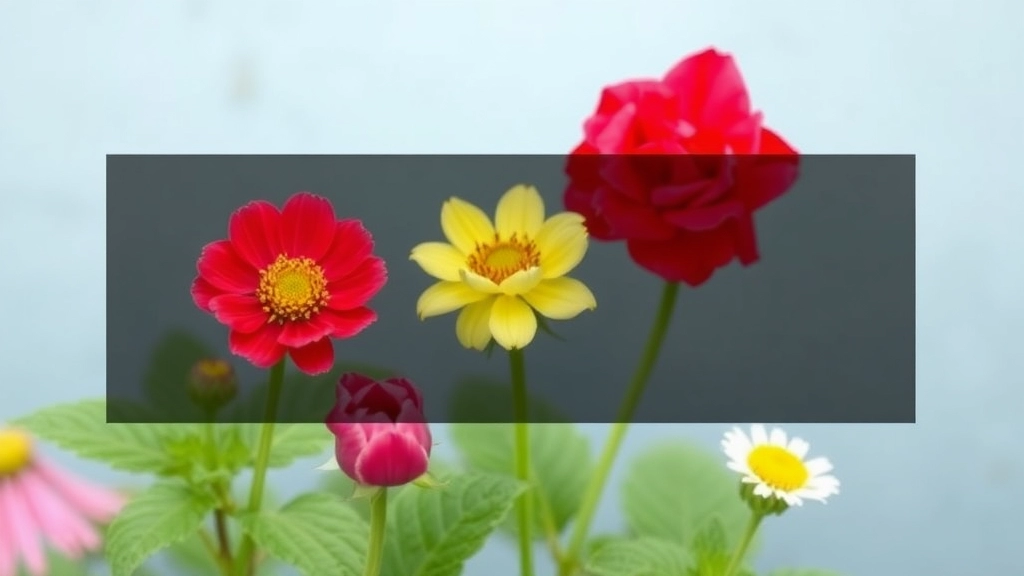
So, you’ve done everything right to coax your Kalanchoe into blooming, but something’s just not clicking? I get it. It can be frustrating when your plant seems to have a mind of its own. Let’s dive into some common flowering problems and their easy fixes.
Lack of Flowers
If your Kalanchoe is looking lush but not producing blooms, it might be due to insufficient light or improper care.
- Solution:
- Ensure it gets at least 6 hours of bright, indirect sunlight each day.
- Consider reducing watering to encourage blooming. Overwatering can lead to lush foliage but fewer flowers.
Drooping Flowers
Are your flowers looking sad and droopy? This can be a sign of stress.
- Solution:
- Check if it’s overwatered. Let the soil dry out between waterings.
- Ensure it’s not in a drafty spot. Kalanchoes prefer stable temperatures.
Faded or Discolored Blooms
If the blooms are losing their vibrant colour, they might be getting too much direct sunlight or not enough nutrients.
- Solution:
- Move it to a spot with filtered light.
- Feed it with a balanced fertiliser every few weeks during the growing season.
Pests and Diseases
Sometimes, pests like aphids or mealybugs can wreak havoc on your Kalanchoe.
- Solution:
- Inspect your plant regularly. If you spot pests, you can wipe them off with a damp cloth or use insecticidal soap.
- Ensure good air circulation around the plant to prevent fungal issues.
Short Blooming Period
If your Kalanchoe blooms for a short time, it might need a little extra care.
- Solution:
- After blooming, reduce watering and allow it to rest. This helps it prepare for the next blooming cycle.
- Give it a break from fertilising for a while to allow it to recover.
Extending the Blooming Period
Are you eager to keep your Kalanchoe blooming for as long as possible? Many plant enthusiasts share this desire, as the vibrant flowers can truly brighten up any space. Fortunately, there are several strategies to extend the blooming period of your Kalanchoe, ensuring that you enjoy its stunning display for longer.
Post-Flowering Care and Maintenance for Kalanchoe
So, your Kalanchoe has dazzled you with its blooms, and now you’re wondering, “What next?”
After the vibrant flowers fade, giving your Kalanchoe the right care is crucial for its health and future growth.
Understanding the Transition
Once the blooming period is over, it’s important to shift your focus to maintenance.
Here’s what you need to keep in mind:
- Cut Back on Watering:
- Let the soil dry out a bit more than usual.
- Water only when the top inch of the soil feels dry.
- Pruning:
- Trim off any dead or wilted flowers.
- This encourages new growth and keeps your plant looking tidy.
- Adjust Light Exposure:
- After flowering, keep your Kalanchoe in bright, indirect light.
- Avoid harsh direct sunlight, which can stress the plant.
- Fertilization:
- Reduce feeding.
- A diluted, balanced fertilizer once a month is enough during this period.
- Repotting:
- If your Kalanchoe is root-bound, consider repotting it in fresh soil.
- This gives it the nutrients it needs to thrive.
Monitoring for Pests
Keep an eye out for any pests that might invade during this transition.
- Common Pests:
- Mealybugs and aphids can be a nuisance.
- Wipe leaves with a damp cloth or use insecticidal soap if you spot any.
Preparing for Future Blooms
As you care for your Kalanchoe post-bloom, you’re setting the stage for another flowering cycle.
- Seasonal Adjustments:
- As the seasons change, adjust your care routine accordingly.
- Remember, Kalanchoes thrive on a seasonal rhythm.
FAQs about Kalanchoe Flowering Season
What factors influence the flowering of Kalanchoe?
Several factors can impact when and how beautifully your Kalanchoe flowers, including light exposure, temperature, watering habits, humidity levels, pruning practices, fertilization schedule, and rest periods.
How much light does a Kalanchoe need to flower?
Kalanchoe thrives best in bright, indirect sunlight. Aim for about 4-6 hours of indirect light daily. South or west-facing windows are ideal, and artificial light can be used if natural light is limited.
What is the optimal temperature for Kalanchoe to flower?
Kalanchoe enjoys warm conditions, ideally between 18°C to 24°C. If it’s too cold, the plant may stop blooming altogether.
How should I water my Kalanchoe to promote flowering?
Ensure the soil dries out between waterings. A good rule of thumb is to water when the top inch of soil feels dry. Overwatering can hinder flowering.
What humidity levels are best for Kalanchoe?
Kalanchoe thrives in moderate humidity. If your home is too dry, consider misting occasionally, but avoid overly humid spaces as they can lead to rot.
How does pruning affect Kalanchoe flowering?
Regular pruning can stimulate new growth and encourage more blooms. Snip off spent flowers and trim back leggy growth to promote bushier plants.
What fertilization schedule should I follow for Kalanchoe?
Use a balanced fertilizer during the growing season. A monthly feed can work wonders for bloom production.
Why does my Kalanchoe need a rest period?
After blooming, giving your Kalanchoe a rest with less water and no fertilizer helps rejuvenate the plant for its next flowering cycle.
What are the signs that my Kalanchoe isn’t getting enough light?
If your Kalanchoe isn’t receiving enough light, you might notice leggy growth or reduced flowering. These signs indicate the plant is not getting the light it needs.
How can I adjust light exposure for my Kalanchoe?
Regularly rotate your Kalanchoe to promote even growth and prevent leaning. During winter, you may need to move your plant closer to the light source as days get shorter.
What should I do if my Kalanchoe is not producing flowers?
Ensure it gets at least 6 hours of bright, indirect sunlight each day and consider reducing watering to encourage blooming. Overwatering can lead to lush foliage but fewer flowers.
How can I fix drooping flowers on my Kalanchoe?
Check if it’s overwatered and let the soil dry out between waterings. Ensure it’s not in a drafty spot as Kalanchoes prefer stable temperatures.
Why are my Kalanchoe blooms faded or discolored?
If the blooms are losing their vibrant color, they might be getting too much direct sunlight or not enough nutrients. Move it to a spot with filtered light and feed it with a balanced fertilizer every few weeks during the growing season.
What should I do if my Kalanchoe has pests or diseases?
Inspect your plant regularly. If you spot pests like aphids or mealybugs, wipe them off with a damp cloth or use insecticidal soap. Ensure good air circulation around the plant to prevent fungal issues.
How can I extend the blooming period of my Kalanchoe?
After blooming, reduce watering and allow it to rest. This helps it prepare for the next blooming cycle. Give it a break from fertilizing for a while to allow it to recover.
References
-
How To Get A Kalanchoe To Bloom: Tips For Kalanchoe Bloom Time
-
Kalanchoe Plant Profile
-
Kalanchoe Plant Care Guide
